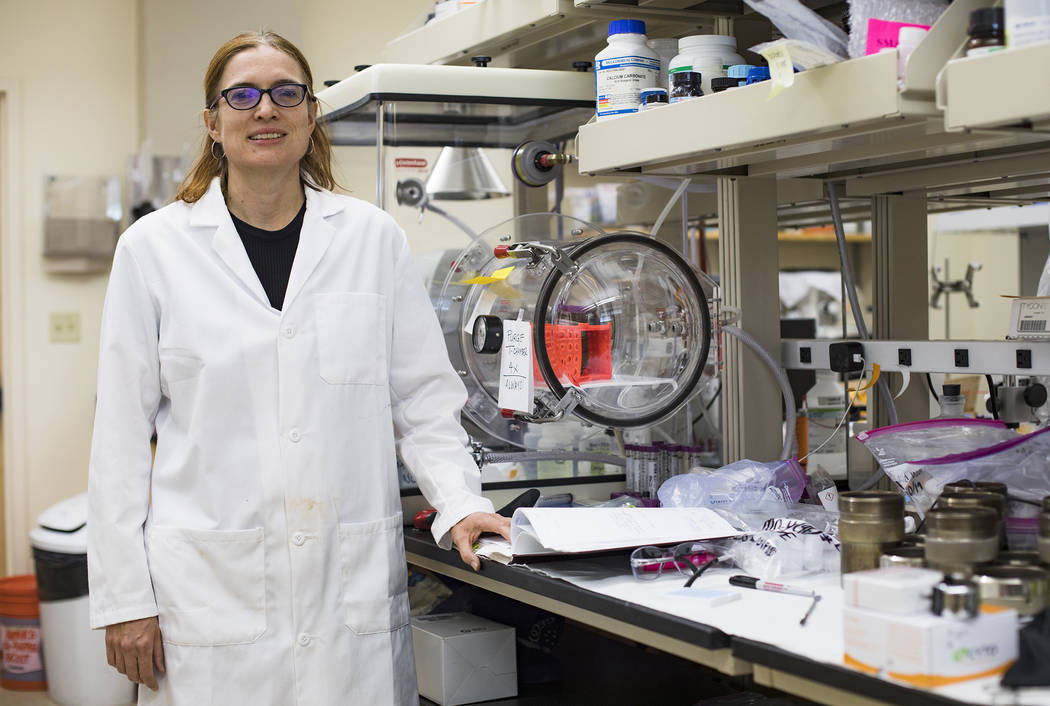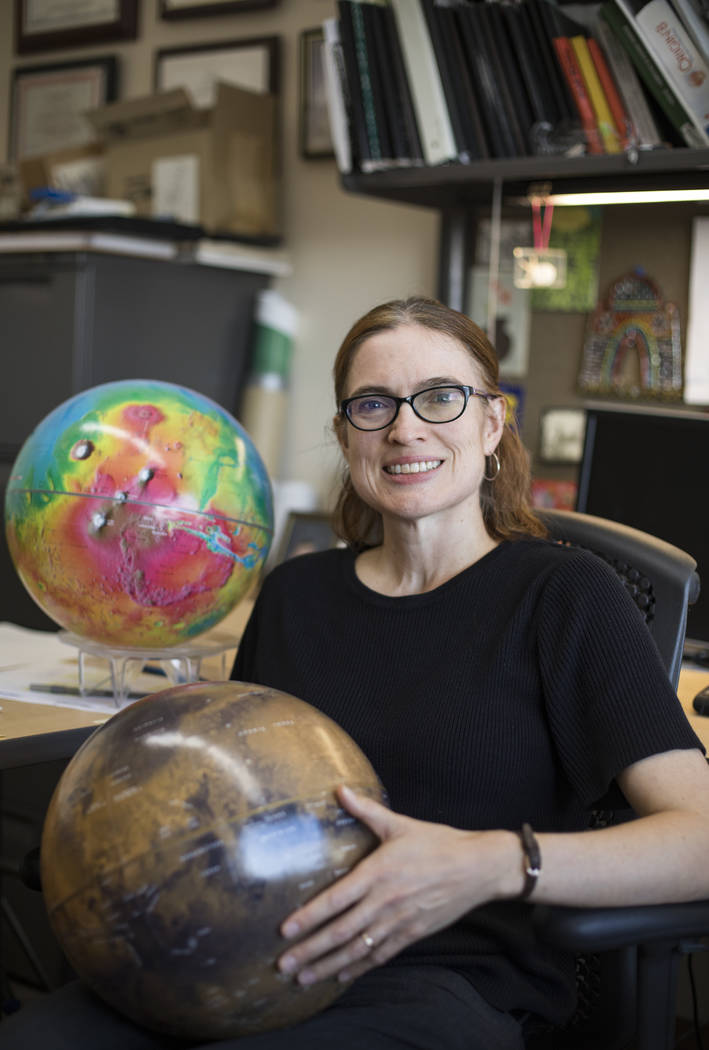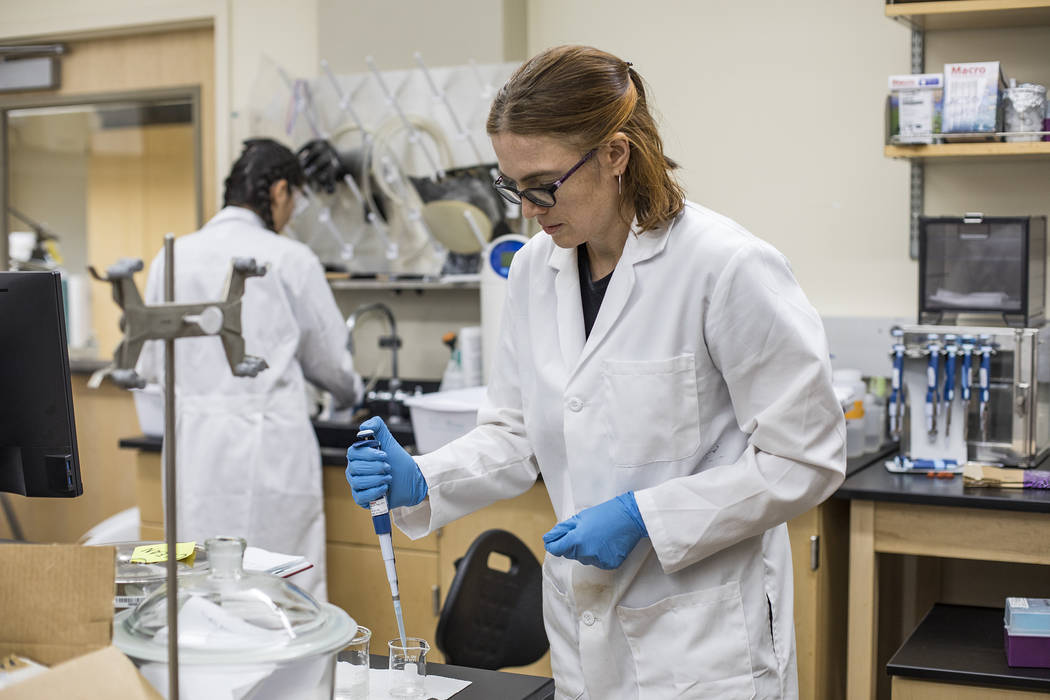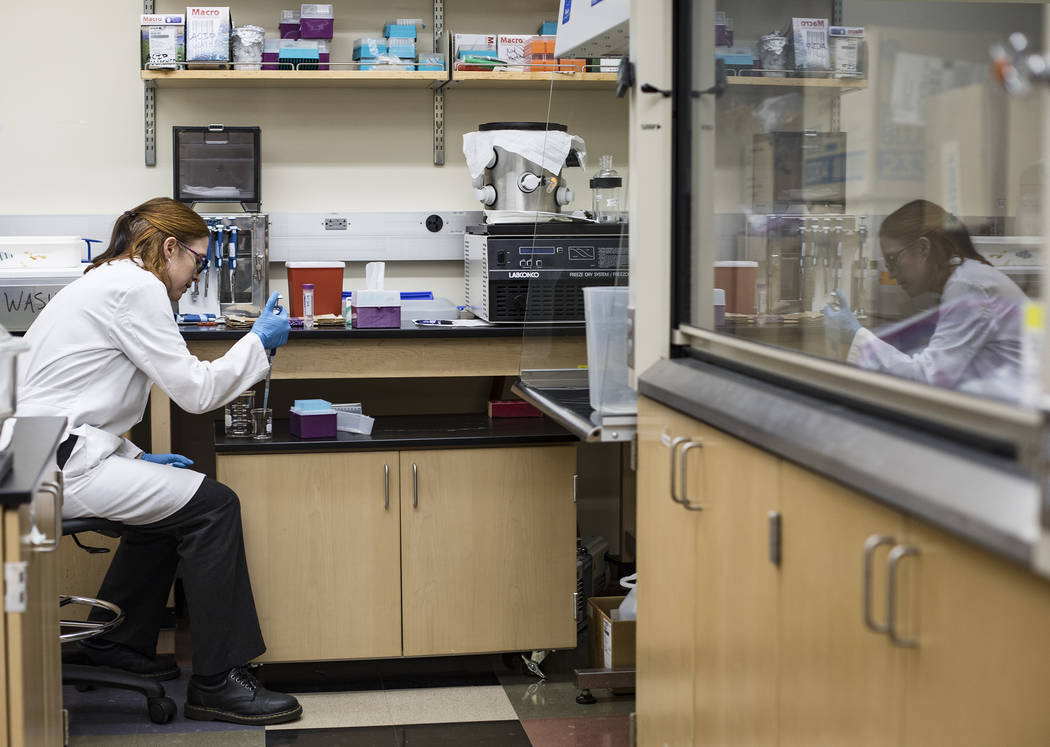UNLV researcher gets front seat in search for life on Mars
If there was ever life on Mars, UNLV researcher Elisabeth “Libby” Hausrath will be one of the first to know.
The geoscience professor is one of just 10 scientists chosen by NASA to select and analyze soil samples from the Mars 2020 mission set to launch in July.
The team will evaluate the samples collected by the robotic Martian rover from afar, choosing which ones to set aside in a planetary cache to be retrieved during a yet-to-be scheduled future Mars mission.
According to NASA’s website, Mars 2020 will search for signs of past life on the red planet and try to prepare for future human space travel by answering some key questions.
“What is its past aqueous history, its past climate, habitability and evidence of life?” Hausrath said in an interview this week. “Habitability, not only for humans but for Martian life, would be indicated by the presence of liquid water, which we know is essential to all life, the presence of energy and those key building blocks of life.”
The answers may be found in soil samples, which can indicate good conditions for life if they are not too acidic or too extreme, she said.
Hausrath said she first became interested in Martian soil during the the 2011 Curiosity Rover mission, which found signs that water once existed on Mars. She did postdoctoral work at the NASA Johnson Space Center, and applied to the Mars 2020 program after a call for proposals from soil scientists.
The majority of Hausrath’s work will be done at UNLV, apart from team meetings at the Jet Propulsion Laboratory in California leading up to the launch.
At her UNLV lab, Hausrath is already leading research into Martian geochemistry with both graduate and undergraduate students. With data from past Mars missions, researchers can model Martian soil and test how it responds to different conditions, student Richard Panduro explained.
Hausrath will be doing work with Martian soil for the long haul: The rover is expected to launch in July 2020, when Earth and Mars are in good relative positions for travel, and land by February 2021. It will spend at least one Martian year — or 687 Earth days — on its mission. The samples won’t make the return trip to Earth until at least 2031, Hausrath said.
In the meantime, she and her team will study the data the rover transmits for hints of what’s to come.
When the soil samples do come back to Earth, they’ll be treated as international treasurers and be made available for study by request, Hausrath said.
All four primary goals of Mars 2020 relate to the planet’s potential as a place for life, according to NASA.
“The Mars 2020 rover helps prepare for future human exploration of Mars with a technology for extracting oxygen from the Martian atmosphere, which is 96 percent carbon dioxide,” a NASA website on the Mars 2020 mission states. “This demonstration of new technology helps mission planners test ways of using Mars’ natural resources to support human explorers and improve designs for life support, transportation, and other important systems for living and working on Mars.”
Contact Aleksandra Appleton at 702-383-0218 or aappleton@reviewjournal.com. Follow @aleksappleton on Twitter.


























